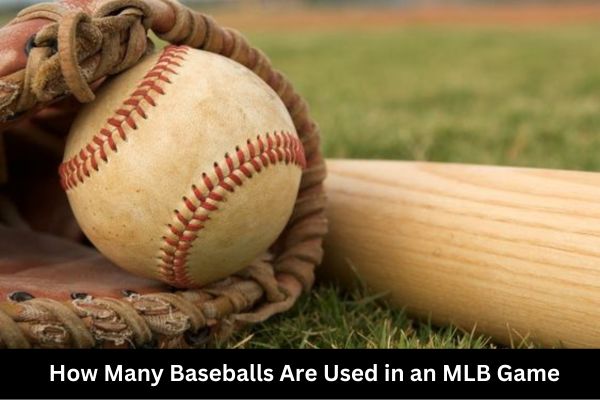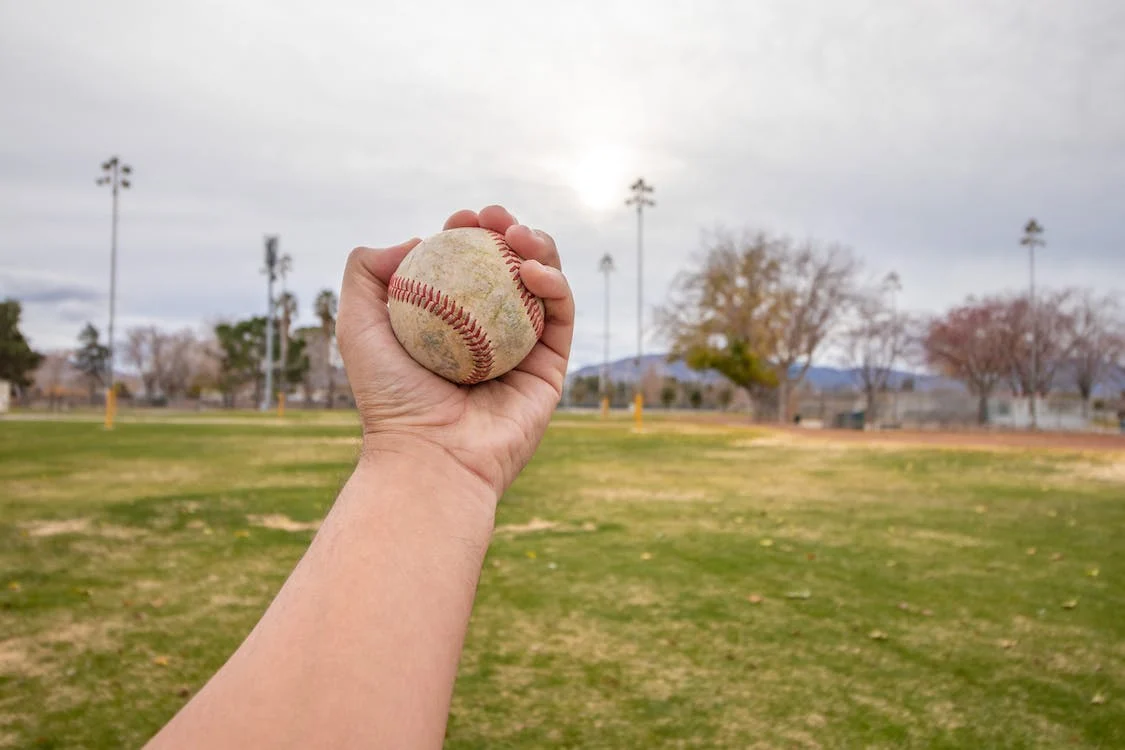 Image Credit-Pinterest
Image Credit-Pinterest
In the dynamic and riveting world of Major League Baseball (MLB) games, baseball itself holds a unique and essential role. As the central element of the game, a baseball encapsulates the spirit, history, and excitement of America’s favorite pastime. Its significance goes beyond being a simple tool for gameplay; it’s a symbol of tradition, competition, and the joy that baseball brings to millions of fans worldwide.
Understanding the management of baseballs in MLB games is pivotal to appreciating the meticulous planning and execution behind each match. The intricate dance between pitchers, batters, and fielders relies heavily on the reliability and condition of these baseballs. From the pitcher’s skillful delivery to the crack of the bat and the precise fielding maneuvers, every aspect of the game hinges on the characteristics and quality of the baseball.
The management of baseball involves a delicate balance between ensuring fair play, adhering to league standards, and maintaining the integrity of the sport. As we delve into the cost, handling, and lifecycle of MLB baseballs, we gain insight into the unseen efforts that contribute to the seamless execution of each game. This exploration promises to unravel the mysteries behind the scenes, providing fans and enthusiasts alike with a deeper appreciation for the unsung hero of the baseball diamond—the humble yet extraordinary baseball.
The Cost Aspect: Decoding MLB’s Investment in Each Baseball
In the intricate tapestry of Major League Baseball (MLB), the financial aspect of each baseball extends beyond its role as a game piece—it represents a strategic investment by the league. The exploration of how much MLB pays for each baseball unveils a fascinating perspective on the economic intricacies that underpin the world of professional baseball.
- Cost Determinants: The cost of an individual MLB baseball is influenced by various factors, including manufacturing expenses, quality standards, and technological advancements. The process involves the meticulous crafting of baseballs to meet the rigorous specifications set by the league. Cutting-edge materials, precision in manufacturing, and adherence to performance standards contribute to the overall cost per unit.
- Historical Perspective: To comprehend the present, we must trace the historical evolution of MLB baseball pricing. Over the decades, the cost of baseballs has experienced fluctuations influenced by technological advancements, changes in manufacturing processes, and shifts in economic landscapes. Understanding this historical context allows us to appreciate the value attached to each baseball today.
- Technological Advancements: The integration of technology in baseball manufacturing has not only impacted the cost but has also contributed to enhanced performance and durability. Innovations in materials and construction techniques aim to strike a balance between tradition and modernity, ensuring that each baseball meets the evolving demands of the game.
- Quality Assurance and Standards: MLB places a premium on the quality and consistency of its baseballs. The league establishes stringent standards to ensure uniformity in weight, size, and performance. The cost per baseball reflects the investments made to uphold these standards, guaranteeing a level playing field for teams and players.
- Economic Considerations: Beyond the technical intricacies, economic considerations play a pivotal role in determining the cost of MLB baseballs. Factors such as market dynamics, production scale, and global economic conditions contribute to the overall financial strategy employed by the league in acquiring its baseball inventory.
In essence, delving into the cost aspect of MLB baseballs unravels a narrative of innovation, tradition, and strategic investment. This exploration sets the stage for comprehending the multifaceted dynamics that govern the financial dimensions of professional baseball.
The Fate of Baseballs That Hit the Dirt: A Ground-Level Perspective
In the high-stakes environment of Major League Baseball (MLB), where every pitch and swing carries significance, the fate of baseballs that hit the dirt is an intriguing aspect that unfolds beyond the intense gameplay. This exploration takes us behind the scenes, revealing the meticulous processes in place to manage and, in some cases, repurpose these iconic game elements.
- Retrieval and Inspection: As a baseball makes contact with the dirt, a swift and well-coordinated effort is initiated to retrieve the ball. Trained personnel, often equipped with specialized tools, swiftly gather the baseballs that have come in contact with the ground. These balls are then subjected to thorough inspection to ensure they meet the stringent quality standards set by the MLB.
- Rotation and Replacement: MLB employs a rotation system for baseballs during a game to maintain a fair and consistent playing experience. Baseballs that have hit the dirt or undergone wear are carefully removed from active play. They are then replaced with fresh, unused baseballs to uphold the integrity of the game.
- Repurposing for Practice: While some baseballs may be retired from official games, they often find new life in practice sessions. Teams frequently repurpose these balls for training purposes, allowing players to refine their skills without the wear and tear associated with brand-new baseballs. This sustainable practice minimizes waste and maximizes the utility of each baseball.
- Charity Initiatives: In a commendable effort towards social and environmental responsibility, some MLB teams engage in charitable initiatives involving used baseballs. Autographed or game-used baseballs are often auctioned or distributed as memorabilia, with proceeds contributing to philanthropic causes. This dual-purpose approach enhances the value of each baseball beyond its role in gameplay.
- Environmental Considerations: MLB is increasingly cognizant of its environmental footprint. Efforts are made to align baseball management practices with sustainable initiatives. From the materials used in manufacturing to the afterlife of retired baseballs, environmental considerations play a role in shaping MLB’s approach toward ecological responsibility.
- Recycling and Upcycling: In alignment with global efforts to reduce waste, MLB explores recycling and upcycling avenues for retired baseballs. From creating artistic installations to repurposing materials for community projects, the league aims to contribute positively to the environment while preserving the essence of the game.
The fate of baseballs that hit the dirt transcends the boundaries of the baseball diamond. It intertwines innovation, sustainability, and a commitment to the broader community, reflecting MLB’s dedication to both the sport and the world beyond the outfield fence.
Reusing MLB Baseballs: A Closer Look at Sustainable Practices
Within the intricate framework of Major League Baseball (MLB), the practice of reusing baseballs introduces a fascinating dimension that intertwines both tradition and sustainability. This exploration delves into the meticulous processes behind the decision to reuse baseballs, shedding light on the factors that influence this eco-friendly approach.
- Sustainable Game Management: The reuse of MLB baseballs aligns with a broader commitment to sustainable game management. Instead of discarding baseballs after a single use, the league strategically implements a system that extends the lifespan of these iconic game elements. This practice not only contributes to resource conservation but also embodies a sense of responsibility towards environmental stewardship.
- Thorough Inspection Protocols: Before a baseball is considered for reuse, it undergoes a rigorous inspection process. Trained personnel meticulously examine each ball, assessing its structural integrity, weight, and overall condition. This stringent protocol ensures that only baseballs meeting the league’s quality standards are reintroduced into play, maintaining fairness and consistency.
- Game Play Factors: Certain game scenarios and conditions may influence the decision to reuse or replace baseballs. For example, in situations where a game experiences frequent home runs or foul balls that result in a surplus of retrieved baseballs, the likelihood of reusing balls in good condition increases. This adaptive approach allows MLB to manage its baseball inventory dynamically.
- Cost-Effective Strategy: Reusing baseballs presents a cost-effective strategy for the MLB. By extending the life of each baseball, the league reduces the overall expenditure associated with procuring new balls for every game. This financial prudence contributes to the league’s ability to allocate resources to various aspects of the game, including player development, infrastructure, and fan engagement initiatives.
- Environmental Impact: The decision to reuse baseballs has a positive environmental impact by minimizing waste. Embracing a circular economy model, MLB’s approach acknowledges the finite resources involved in baseball manufacturing and actively seeks ways to reduce the ecological footprint. This environmentally conscious stance resonates with a global push towards sustainability in professional sports.
- Balancing Tradition and Innovation: Reusing baseballs strikes a harmonious balance between the tradition of the game and innovative sustainability practices. It embodies a thoughtful integration of time-honored elements with modern approaches, showcasing MLB’s ability to evolve while preserving the essence of the sport.
- Continued Technological Integration: Advancements in technology play a role in the decision-making process regarding reused baseballs. The MLB leverages technology to track and monitor the performance of baseballs, ensuring that reused balls meet or exceed the required standards. This marriage of tradition and technology exemplifies MLB’s commitment to maintaining the highest level of gameplay.
In conclusion, the practice of reusing MLB baseballs encapsulates a strategic, eco-conscious, and cost-effective approach. It exemplifies the league’s dedication to both the game’s enduring traditions and its responsibility towards sustainable game management.
Historical Evolution: Unraveling the Timeline of MLB Baseball Management
The history of Major League Baseball (MLB) is a tapestry woven with traditions, innovations, and strategic adaptations. Tracing the evolution of when MLB started replacing balls that hit the dirt reveals a captivating journey that reflects the league’s commitment to refining the game while preserving its essence.
- Early Practices: In the early days of MLB, the replacement of baseballs that hit the dirt was not as standardized as it is today. Game management varied between teams, and the frequency of replacing baseballs often depended on factors like team preferences, available resources, and the condition of the playing field. It was a period marked by experimentation and localized approaches.
- Standardization Initiatives: As MLB evolved, a push for standardization emerged. The league recognized the importance of consistency in gameplay and sought to establish uniform practices regarding the replacement of baseballs. This phase witnessed the implementation of guidelines to ensure that the condition of baseballs did not unduly favor any team, contributing to a fair and level playing field.
- Technological Advancements: The latter half of the 20th century brought technological advancements that significantly influenced MLB’s approach to baseball management. Innovations in manufacturing, materials, and quality control allowed the league to produce baseballs with greater durability and standardized performance. This technological leap contributed to a more predictable and reliable game, influencing the decision-making around ball replacement.
- Introduction of Rotation Systems: A pivotal moment in the historical evolution occurred with the introduction of rotation systems. MLB embraced the concept of rotating baseballs during a game, ensuring that fresh and well-maintained balls were consistently in play. This systematic rotation marked a departure from ad-hoc practices and established a more organized and fair approach to managing baseballs during a match.
- Stringent Quality Control Measures: In recent decades, MLB has implemented stringent quality control measures to uphold the highest standards for its baseballs. Rigorous testing, inspection protocols, and collaboration with manufacturers have become integral parts of the league’s strategy. This commitment to quality ensures that baseballs meet precise specifications, contributing to the integrity of the game.
- Environmental Considerations and Sustainability: The 21st century has witnessed MLB’s growing awareness of environmental considerations. The league has taken steps to align baseball management practices with sustainable initiatives. Efforts include exploring eco-friendly materials, recycling programs, and charitable initiatives involving retired baseballs. This marks a progressive shift towards a more environmentally responsible approach.
- Fan Engagement and Memorabilia: MLB’s evolving approach to baseball management extends beyond the field. The league recognizes the sentimental value of game-used baseballs to fans. This understanding has led to initiatives where autographed or game-used baseballs are offered as memorabilia, connecting fans with the game’s history in a tangible and meaningful way.
- Continuous Adaptation: The historical evolution of MLB’s approach to baseball management is a testament to the league’s ability to adapt continuously. Whether driven by technological advancements, fairness considerations, or environmental consciousness, MLB remains committed to refining its practices while respecting the cherished traditions that define the sport.
In conclusion, the historical evolution of when MLB started replacing balls that hit the dirt reflects a nuanced journey marked by standardization, technological progress, sustainability, and a perpetual quest for excellence in the game of baseball.
Behind the Scenes: Navigating the Intricacies of MLB Baseball Management
Unveiling the behind-the-scenes processes of handling baseballs during and between games offers a glimpse into the meticulous and strategic practices that orchestrate the rhythm of Major League Baseball (MLB). This exploration delves into the unseen realms, featuring insights, interviews, and quotes from MLB officials to provide a comprehensive understanding of the league’s approach to baseball management.
- Pre-Game Preparation: The ballet begins before the first pitch is thrown. MLB officials orchestrate the meticulous preparation of baseballs, ensuring that each one adheres to the league’s exacting standards. This involves inspections, quality control checks, and the careful arrangement of baseballs ready for gameplay.
- Rotation Protocols: Behind the scenes, a systematic rotation protocol is implemented. MLB officials manage the logistics of introducing fresh baseballs into play at strategic intervals. This ensures that the game maintains its integrity and fairness, with each team having the opportunity to engage with consistently conditioned baseballs.
- Technology Integration: Modern technology takes center stage in the management of MLB baseballs. Tracking systems and sensors are employed to monitor the performance and trajectory of each baseball. This data is crucial for assessing the impact of the ball on gameplay, contributing to a more nuanced understanding of the game’s dynamics.
- Interviews with MLB Officials: Insights from interviews with MLB officials shed light on the decision-making processes that govern baseball management. Officials discuss the considerations, challenges, and innovations that influence their approach. These interviews provide a direct perspective on the league’s commitment to excellence in game management.
- Environmental Stewardship: Behind the scenes, MLB demonstrates a commitment to environmental stewardship. Sustainable practices in baseball management, such as recycling programs and eco-friendly materials, align with the league’s broader initiatives towards ecological responsibility. Interviews with officials delve into the league’s motivations and strategies in this realm.
- Storage and Transportation: Efficient storage and transportation of baseballs between games are critical components of the behind-the-scenes narrative. MLB officials coordinate the logistics of securely storing and transporting baseballs, ensuring their optimal condition for gameplay in different stadiums and climates.
- Collaborations with Manufacturers: MLB’s partnerships with baseball manufacturers are integral to the behind-the-scenes ballet. Officials work closely with manufacturers to stay at the forefront of technological advancements in baseball construction. These collaborations contribute to the continual improvement of baseball quality and performance.
- Fan Engagement Initiatives: Beyond the technicalities, the behind-the-scenes processes include initiatives aimed at engaging fans. Interviews may reveal how MLB officials conceptualize and execute programs involving game-used baseballs as memorabilia, fostering a deeper connection between fans and the sport.
- Continuous Improvement Philosophy: A recurring theme behind the scenes is the league’s commitment to continuous improvement. MLB officials discuss how they actively seek feedback, analyze data, and implement changes to enhance the overall experience for players and fans alike.
In essence, the behind-the-scenes panorama of MLB baseball management is a symphony of precision, innovation, and dedication. Interviews and insights from MLB officials provide a rich tapestry of perspectives, offering fans and enthusiasts a backstage pass to the intricate dance that unfolds in the unseen corners of America’s favorite pastime.
Conclusion
The orchestration of baseball within Major League Baseball (MLB) is an intricate dance that seamlessly intertwines tradition, innovation, and strategic management. The evolution of MLB’s approach to baseball, from historical practices to modern sustainability initiatives, reflects a commitment to excellence while preserving the essence of the game.
The historical journey reveals a progression from localized methods to standardized practices, mirroring the league’s dedication to fairness and consistency. Technological advancements have propelled MLB into a new era, where data-driven insights and quality control measures ensure optimal performance.
Behind the scenes, the unseen efforts of MLB officials come to light. Interviews and quotes underscore the meticulous preparations, systematic rotations, and environmental stewardship that characterize baseball management. The league’s continuous improvement philosophy, coupled with collaborations with manufacturers and fan engagement initiatives, illuminates a dynamic commitment to advancing the sport.
Ultimately, the role of baseballs in MLB extends beyond mere game elements; they symbolize the heartbeat of a sport cherished by millions. The league’s careful orchestration ensures that each baseball contributes to a fair, sustainable, and thrilling game. As the story of baseball unfolds, it becomes clear that their journey is not just on the field but is woven into the very fabric of America’s pastime, embodying a timeless connection between players, fans, and the enduring spirit of baseball.
How much did you like Decoding the Numbers: Baseball Consumption in an MLB Game? Share your view in the comment box. Also, share this blog with your friends on social media so they can also enjoy it. For more blogs, visit baseballpropicks.com
Related Article:
- Cultural Impact: Baseball Caps in Fashion
- Understanding the Basics of Baseball
- Historical Moments in Baseball
- Inside Baseball: The Core Cover
- Best Baseball Gloves by Position

Meet Daniel Anderson, the heart and soul behind Baseball Pro Picks. At 49, Daniel’s life has revolved around baseball, a passion that’s as strong today as it was when he first fell in love with the game. Living in the USA, Daniel has dedicated countless hours to watching, analyzing, and understanding every pitch, hit, and home run, making almost no game missed. His deep-rooted love for the sport is matched only by his commitment to sharing insightful, expert analysis with fellow baseball enthusiasts. With decades of experience and a keen eye for the game’s nuances, Daniel brings a unique perspective that enriches Baseball Pro Picks. Trust Daniel to guide you through the intricacies of baseball with the authority and trustworthiness of a true aficionado.

